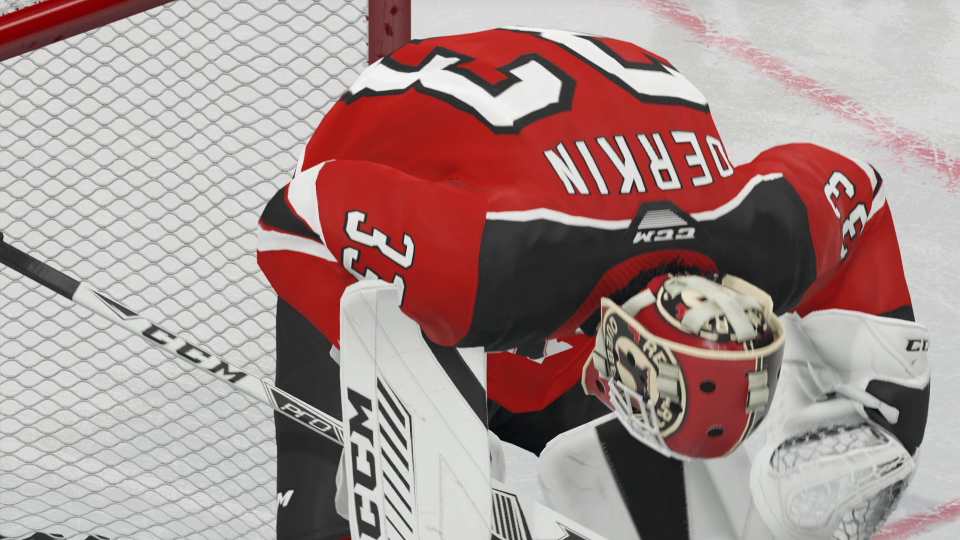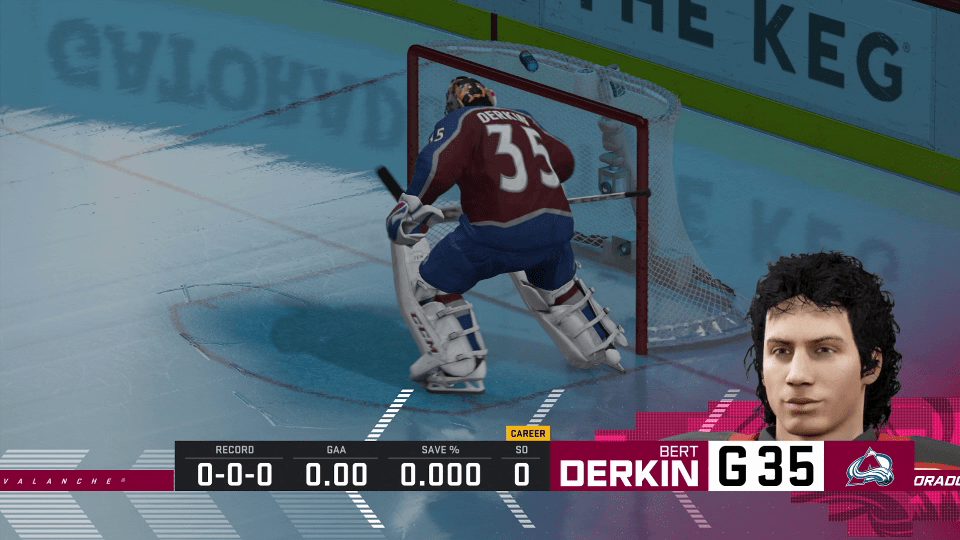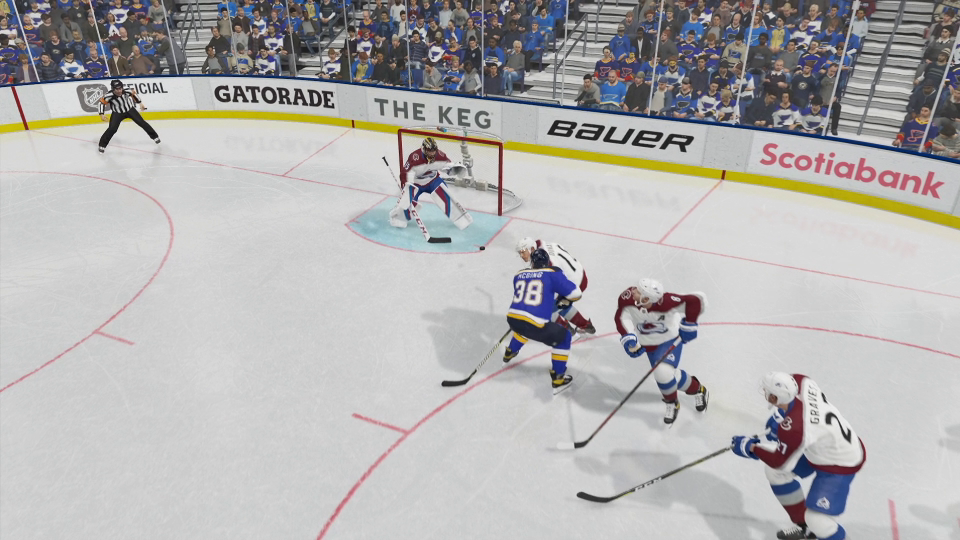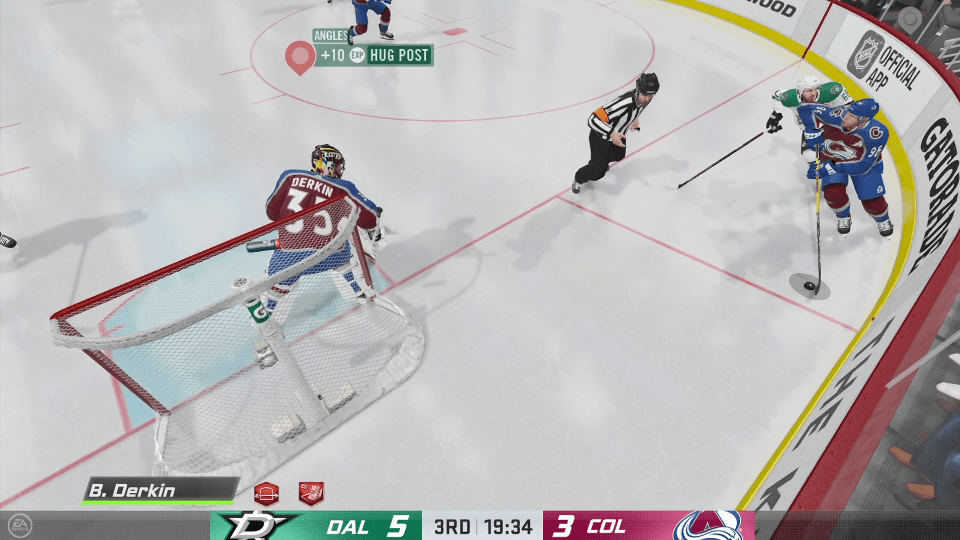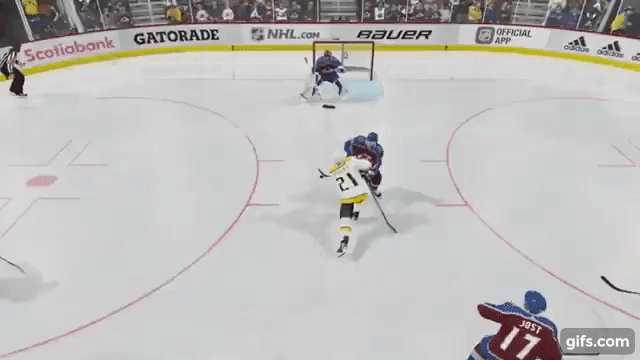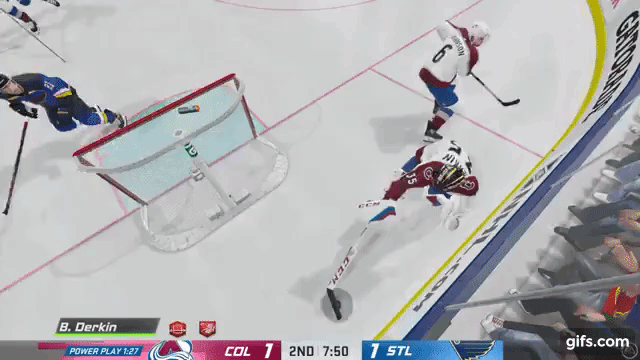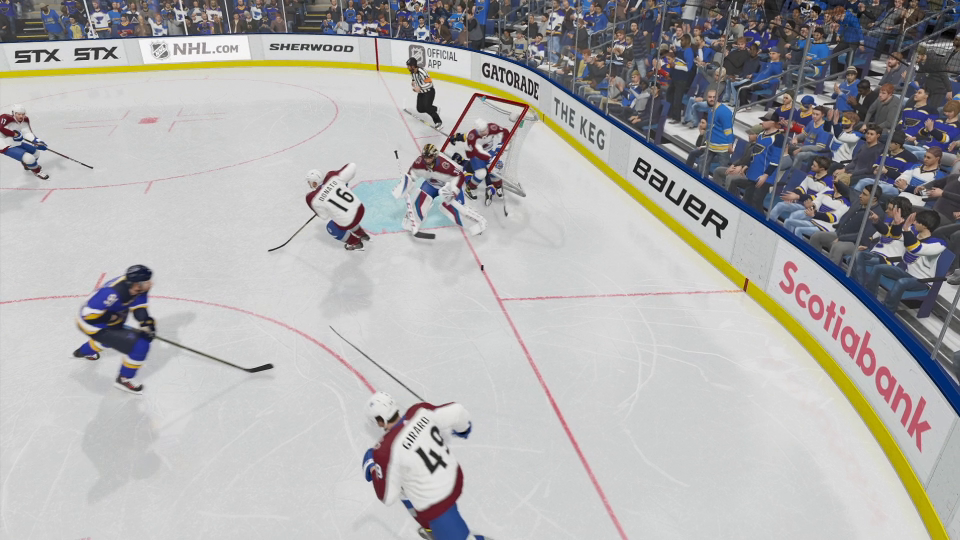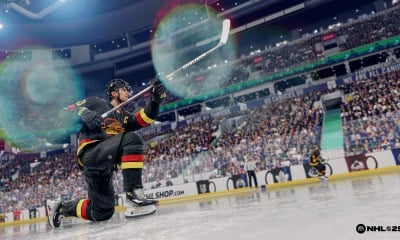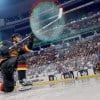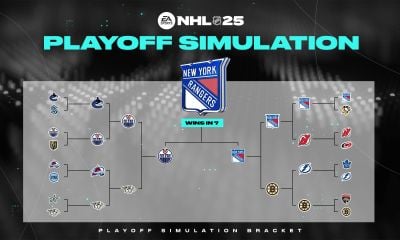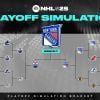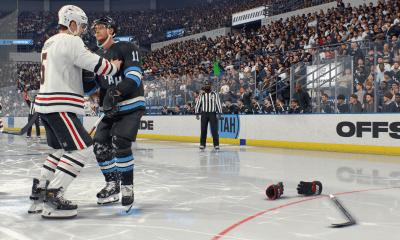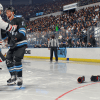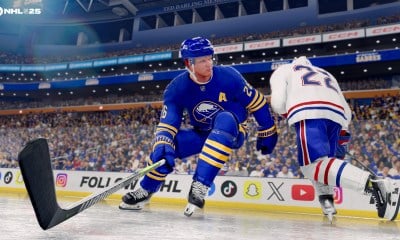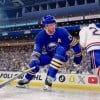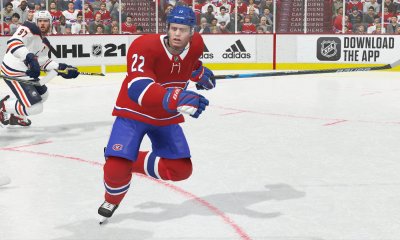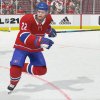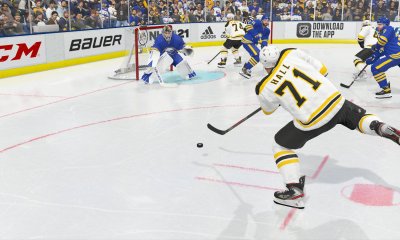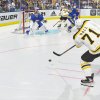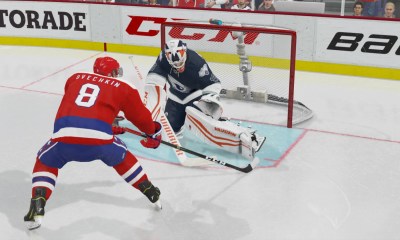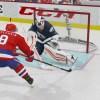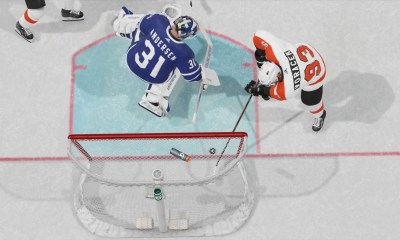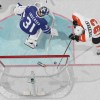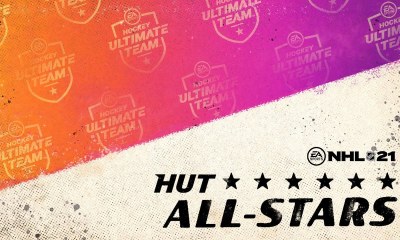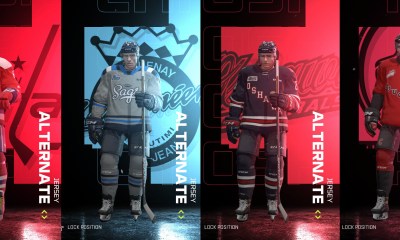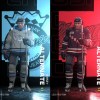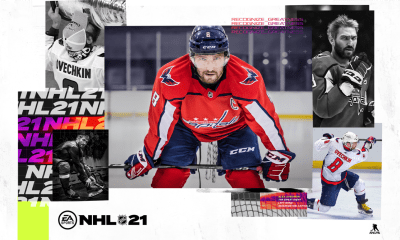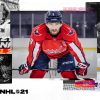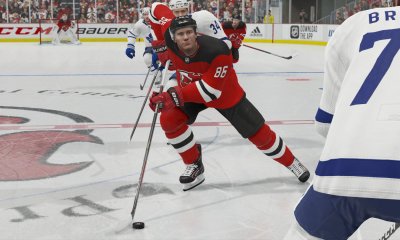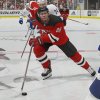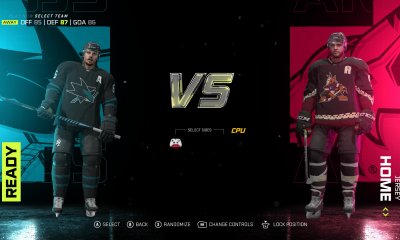NHL 21
NHL 21 Goalie Guide: Channel Your Inner Roy
Like many red-blooded Canadians, I had vague aspirations of becoming a professional hockey player when I was younger. Competing annually in house leagues as a forward whose stockiness in my early teens gave me a noticeable size difference on most of my peers, my skill-set was mainly limited to being a disruptive presence in front of the net. It developed into such a defined role of me planting myself firmly near the top of the crease and putting home rebounds that one of my coaches even gave me the illustrious nickname of “The Garbage Man.” But to be honest, I always really wanted to be a goalie, which gives way to this NHL 21 goalie guide.
NHL 21 Goalie Guide
During recesses and lunches, when a lot of us kids would set up nets on the pavement of the schoolyard and pick up our sticks to play some street hockey, I would often be the one to strap on the goalie pads and don a blocker (depending on availability) and mitt (on good days a legit street hockey one, other times just a baseball glove). God bless my parents, they even let us set up a net to play in our basement where my siblings and friends would gather to irreversibly scuff up the floors and poke ugly holes in the ceilings with our errant sticks.
One time, the goalie on my house hockey team didn’t show up so I even had the opportunity to strap on the real equipment to stop actual pucks in a game on ice. I didn’t fare too badly either, giving up just one goal thanks in large part once again to being a bigger kid who just naturally took up a lot of space in net, but I learned that day just how incredibly heavy all that gear feels when you’re trying to move within the crease. By the end of the game, I had a new appreciation for the athleticism required by the position and just how quickly the elite goalies were able to get all the way from one post to the other in order to make a jaw-dropping save when needed.
Since the release of EA’s very first NHL Hockey game back on Sega Genesis, my desire to play goalie has extended to video games. Sadly, in the early years of the series, controlling the goalie was nearly impossible. But things gradually became better with the advent of 6-on-6 EASHL online play, as it eventually became feasible for those who put in the practice to at least match, if not better, the performance of the CPU in net. As anyone who plays World of Chel drop-in games in NHL 21 will tell you, however, it’s all too common to play alongside horrendous goalies unable to stop a beach ball when they’re not actively trying to sabotage their own team by skating out to center ice.
Because of this, it’s always been intimidating to think about learning how to play goalie in NHL 21 as it was clear from watching plenty of others struggle to make saves in online games that it would be anything but easy to master. But recently, I decided to throw caution to the wind by jumping between the pipes and creating a goalie in the Be A Pro mode to see just how hard it would be make stunning kick saves and huge grabs with the glove. That way, I could cut my teeth against AI opponents and likely make a fool of myself without worrying about other humans on my team getting angry with their terrible goalie.
It has proved to be a fun, rewarding, and at times frustrating experience that can have you vacillating between feeling like you’re a superstar in one moment when you make a big cross-crease save to feeling like an absolute amateur the next when you let in a soft goal even a child could stop. As if to prove how wild the emotional swings can be, sometimes these two feelings can happen at different moments of the exact same game. But throughout my short goaltending career thus far, there are certainly some lessons I have learned that have made me a better player, and I thought I would share some of these with other aspiring goalies like myself out there.
Positioning
Just like in real life, a hugely important aspect of being a goalie is putting yourself in the right position to stop the puck. Fortunately, unlike in real life, the game of NHL 21 will help you out a great deal by automatically providing you animations like glove and pad saves, essentially eliminating some of the tricky split-second decision-making and rewarding you for being in an ideal spot for a save. Is this foolproof? Of course not. There will be times when you feel like there’s absolutely no better place you could have been to block a shot and yet the game’s animation will not be enough to prevent you from getting beat. But if you’re able to make a habit of keeping the puck directly in front of you, you’ll be squared up to at least give yourself the best possible chance of success in keeping shots from getting by you.
Cutting The Angles
At the same time, you want to ensure that your positioning is ideal while moving left to right. You’ll also need to consider how far you want to be out of the crease to best challenge shooters and give them as little of the net as possible at which to shoot. If you sit back too far in your crease, you’ll likely find that good shooters will be able to frequently snipe the corners on you, so get out there and challenge puck-handlers as much as possible.
However, be careful to not get too far out of the net at the wrong time because you can leave yourself vulnerable when a pass goes to the other side of the ice and suddenly you find yourself way out of position to stop a shot from over there. It’s important then to pick your moments and anticipate when players are about to wind up and let one rip in your direction.
Hug The Posts
Things can get a little hairy for a goalie when the puck is behind the net, especially if it’s being controlled by an opposing player. This is where sticking closely to one of your posts might be your only defense against a quick wraparound attempt. You can push a bumper/shoulder button depending on which post you want to hug, and even jump from one post to the other in case players are trying to be tricky about which side of the net they want to attack.
Once again, this is another tactic that can end up really hurting you if relied upon too often because if you don’t stop clinging to the post when a pass comes in front of the net, you can wind up looking pretty silly as someone scores an easy goal all while you’re still glued to a post like an idiot.
Sliding
The bane of every user goalie in NHL 21 is the dreaded cross-crease pass because a goalie swiftly getting from one side of the net to the other in the time it takes for a wide open shooter to bang the puck home with a reliable one-timer can seem next to impossible sometimes. That’s where holding down L2 or LT when moving can come in handy, as it will allow you to rapidly slide to get across the crease and at least theoretically give you a better chance to follow a hard pass to a shooter.
The key with this is using it only when absolutely necessary because sliding can also easily cause you to get out of position and leave a wide open section of the net for someone to collect a free goal.
Cover The Puck
There will be times playing goalie when your best (or at least safest) course of action will be to put a stop to the game by freezing the puck so that your team can regroup. When you’re able to make a stop, your biggest worry should then pivot to controlling the puck to best limit the possibility of any juicy rebounds being put home while you’re busy still recovering from the save you made. Luckily, there are some animations, like glove saves for instance, where you will automatically control and sometimes even freeze the puck without you needing to do anything.
Otherwise, when the puck is directly in front of you, pushing triangle (or Y on Xbox) should make an attempt to cover the puck and stop play. But if that puck isn’t quite close enough, that same button will instead have you down in butterfly style and can give shooters some good looks at the net.
Poke Check
As a goalie, you can’t just allow puck handlers to skate right in front of you and take their sweet time to decide how and where to get one past you without at least some resistance. That’s where the poke check can come in handy, allowing you to reach your stick out in a flash to make an attempt to get the puck off of their stick and defuse whatever goal-scoring danger is presenting itself.
Make sure to use this weapon in your arsenal rather sparingly because, as you can probably imagine, you won’t have much chance of stopping any shot attempts that come your way while you are in the midst of trying to poke check.
Handling The Puck
Just don’t do it.
All kidding aside, it can obviously be tempting to want to play the puck since you’re generally being deprived of that opportunity by virtue of occupying the goalie position, but it can usually get you in more trouble than it’s worth. Obviously, by handling a puck that finds its way to you, the dream is that you will make some amazing lead pass to earn an assist or maybe even fire it down the ice into an empty net for a rare goal.
But the reality is more likely to end with you giving the puck away and a player scoring in the net you made the mistake of vacating. Also, remember that playing the puck below the goal line outside of the trapezoid is a penalty, lest you find that out the hard way.
Get Low
In circumstances where you don’t want to have to risk the game giving you an undesired animation or perhaps even no animation at all, there are a number of animations that you can trigger on your own instead. That being said, you might want to choose to use these rather judiciously. Most of them are designed to be used in more desperate circumstances where sprawling out spread eagle or stacking your pads on the ice might actually be your best option.
Otherwise, even using the right stick to slide along the ice one way or another can get you out of position if not done properly. From my experience, it’s best to rely on the game-generating animations automatically for the most part, but there’s a time and a place for a wild splaying of limbs if you can time it correctly during the heat of the moment.
Bottom Line
There’s no way around it really: playing goalie in NHL 21 can sometimes be incredibly maddening. Like so many other things that you try to learn, progress can feel deceptive. You might think after a good game that you have everything figured out — only to get shelled for six or seven goals in the next one. They say that it’s best for quarterbacks to have short memories so they can easily put interceptions behind them and the same is true of being a goalie. When you concede a bad goal or one where you’re unsure what you really could have done any differently to achieve a better result, all you may be able to do in these dark moments to recharge your confidence is to take a deep breath, brush it off, and get ready to stop that next puck.


